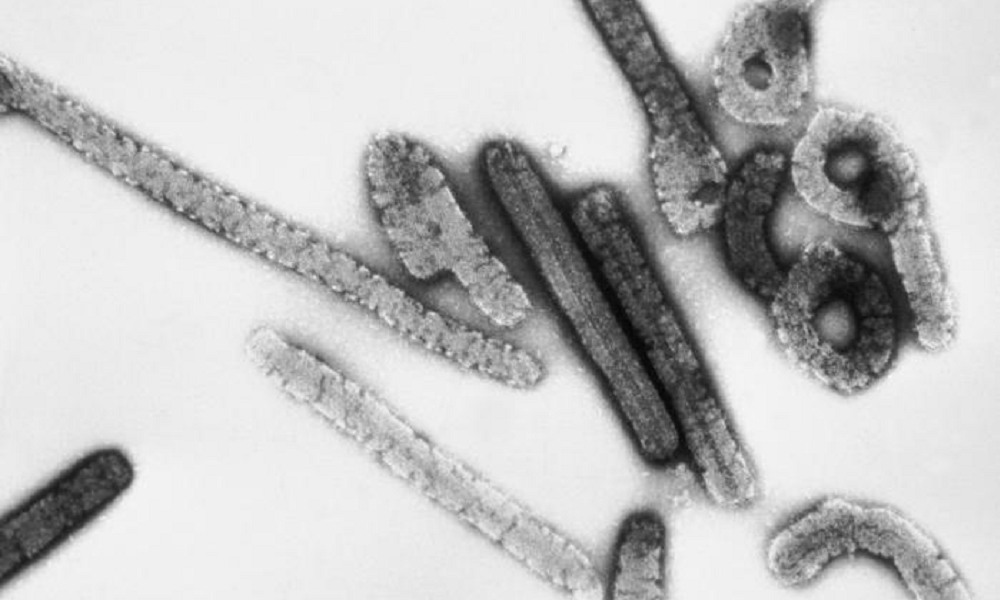Reviews
HL7 Integration Explained: Steps for Successful Implementation

Healthcare data exchange is key for better patient care, especially now that so much is digital. The easy sharing of things like patient records and lab results helps doctors and nurses do their jobs better. This is done with rules called HL7, or Health Level Seven. HL7 lets different healthcare systems talk to each other in a safe way. This means electronic health records, lab results, and billing can all work together, making the whole healthcare experience better for people. In this blog, we talk about HL7 integration. We will tell you its benefits, what you need to get started, and the steps you take to use it the right way.
Understanding HL7: The Foundation of Healthcare Data Exchange
HL7 is at the center of healthcare data exchange. It lets healthcare applications work together and share data. HL7 is used to connect clinical systems to other things like office databases. It uses a common way to format data, so that all parts of healthcare work better.
HL7 began in 1987. Since then, it has become important for medical facilities that want to make things better for patient care. HL7 helps make sure different systems can work with each other. This makes healthcare integration easier. That is why HL7 matters when you want different systems to work together in this field.
What Does HL7 Stand For and Why Is It Important?
HL7 means Health Level Seven. The name comes from the seventh level in the ISO communication model. At this level, software talks with other software. HL7 helps healthcare systems talk to each other. They do this by using the same rules. This way, different systems in health care can work together and understand each other better.
In the healthcare industry, HL7 helps join different systems. It lets healthcare providers share clinical data, patient care details, and other information with each other. With HL7, the exchange is safe and fast. This helps them work together and improve patient care.
The main reason HL7 is important is that it helps different healthcare systems talk to each other. It does this by using the same data formats and message types. These systems include EHRs, laboratory information systems, and radiology systems. Because HL7 connects these information systems, healthcare providers can give better patient care. It also cuts down on manual work, so there are fewer mistakes and delays in what people need to get done in healthcare.
Key Concepts and Terminology in HL7
To work with HL7, you have to learn some key ideas and words. These are important for people who want to connect healthcare systems.
- Message Types: HL7 messages come in several types. A few are ADT (Admission, Discharge, Transfer), ORM (Orders), and ORU (Observation Results). Each one is made for a certain job. These message types help send the right info fast and easy.
- Data Formats: HL7 uses basic data formats like XML and JSON. This helps healthcare systems talk with each other. They can read and send healthcare data in the same way.
- Interoperability: Interoperability means HL7 connects healthcare systems that are not the same. It lets all these systems do better clinical data exchange.
- Clinical Data: Clinical data includes things such as patient info, images, lab results, or a doctor’s notes. HL7 moves this info between different systems. This way, everyone can get what they need, when they need it.
- Integration Engine: The integration engine is software used to help HL7 messages go to or from a system. It keeps healthcare data flowing smoothly between different systems. This makes sure healthcare info is in the right place at the right time.
All these ideas show why HL7 is important in healthcare. It helps both big and small healthcare systems by making data exchange simple. You can also use it for clinical data exchange. This makes the work easy for everyone. It helps you share patient details in the right way, so all providers have the information they need.
HL7 Standards and Versions: An Overview

HL7 standards have changed a lot over time. They started with HL7 v2.0. Then, there was HL7 v3.0 and FHIR. Every new version, like v3.0 and FHIR, has added something different. These changes help healthcare systems do better data exchange. Now it is easier for the parts of a system to have seamless data exchange with each other.
Many people still use HL7 v2.x because it is simple to use and easy to work with. HL7 v3.0 has more features that help with data exchange. It has the Reference Information Model (RIM), which makes data in healthcare systems work well together. Now, with new tools like FHIR, healthcare applications can connect in a better way. This helps data exchange in today’s healthcare systems be faster and better.
Introduction to FHIR: The Next Generation HL7 Standard
FHIR (Fast Healthcare Interoperability Resources) is a new set of rules from HL7. It is made for today’s healthcare apps and systems. FHIR uses JSON, XML, and RESTful APIs. These help the quick data exchange of healthcare information. With FHIR, there is fast healthcare interoperability between platforms. It supports sharing healthcare interoperability resources in an easy way. This makes it simple for people to get, use, and send healthcare information.
Unlike the old HL7 versions, FHIR is made so it can grow with what you need. It lets web and mobile healthcare solutions work together with no trouble at all. The system makes sure that healthcare information stays safe when people share it.
Healthcare providers like to use FHIR because it helps them share data fast and in real time. It also makes it easier and less pricey for different services to work with each other. FHIR helps new ideas start and grow. Because the system is flexible, FHIR is a good choice for SaaS applications and new medical systems.
The Role of HL7 in Healthcare Interoperability
HL7 has made it easier for healthcare providers to work with each other. It allows seamless communication between different medical systems. With HL7, things like billing platforms and radiology solutions can connect better. This lets everyone get the relevant data they need, just when they need it, to help with patient care.
With HL7, there is better operational efficiency. There are also fewer problems with data being stored in different places in other organizations. As more people need good patient care, HL7 helps with faster workflows. This also leads to better patient care for everyone.
How HL7 Enables Seamless Data Sharing
HL7 makes it easy for healthcare providers to get and share clinical data fast. Here is how it works:
- Standardized Formats: HL7 uses set data formats. This means the information comes out the same way each time for everyone.
- Secure Messaging: HL7 keeps all patient data safe. It makes sure the data stays private when you send it to others.
- Interface Engines: These engines move HL7 messages between different systems. This makes things simple for you.
- Enhanced Accessibility: Providers can see patient data in real time. It does not matter what system they use.
HL7 helps to connect different systems. This lets people work together more easily. With HL7, patient care can improve. Everyone can help each other and give better patient care.
Common Challenges in Achieving Interoperability
Interoperability can have some big problems that slow down healthcare integration.
- Legacy Systems: Older legacy systems usually do not have the tools you need for new HL7 integration. This can hold you back.
- Varied Data Formats: Using so many data formats can make things hard to follow. Mix-ups and confusion can happen.
- Resource Constraints: There may not be enough people or money to do the job. A lack of resources slows things down.
- Incompatibility Across Systems: Every one of these healthcare systems can need its own special setup. This makes it harder to get things to work together.
Knowing about the problems in data formats, healthcare systems, and legacy systems is key. It helps us find better ways to make healthcare integration work well. When we see these issues, we can fix the gaps and make sure the parts of the system talk to each other. This is why it is so important to look at data formats, healthcare systems, and legacy systems closely. In the end, this helps everyone get good care and makes healthcare integration strong.
Preparing for HL7 Integration: Prerequisites and Planning
To set up HL7 integration, you need to plan well. A good plan helps healthcare IT systems match what the project needs. Medical organizations should check their current setup first. They should also have clear goals for the integration before starting.
Healthcare providers need to work with people who are in their group to talk about things like data formats and if the systems can work with each other. If they have the right plan and also some help from experts, HL7 integration can go well. It will be ready for what comes next.
Assessing Your Current Healthcare IT Infrastructure
To start HL7 integration, first look at your IT setup. Find out what the system does well. Also, see where it needs help. You need to check if your EHR and clinical systems are working well. Make sure they are ready for this job.
Make sure that all medical devices, lab systems, and radiology setups connect with the HL7 system. This lets the data move the right way and helps everything work together. If you see any problems with how they connect, fix them as soon as you can.
When you check your setup, you get to see what can be better. This lets all your systems get ready for what comes next. It also helps everything to work well together.
Identifying Integration Goals and Stakeholders
Setting clear goals for how you want to connect systems helps explain what you want to do with HL7. When you have good, clear goals, it is easier to know what steps to take. This will also help you choose the right tools. A clear plan can make this work go well for everyone in the team. If you use HL7 in the right way, there will be less confusion and the tasks will seem simpler. Knowing what you want can bring the team together to work as one. In the end, everyone will feel that they know what to do and will get better results.
- Operational Improvement: Make handling office work simple and finish tasks fast.
- Better Patient Outcomes: Help people who need care by letting doctors get clinical data right away.
- Secure Data Sharing: Keep medical records safe and make sure the information goes between people the right way.
- Collaboration: Bring healthcare providers, IT managers, and people who build the system together so they can work as one team.
Doing these things before you begin will help you follow what your healthcare group wants. It can also make things easier for all the people who are part of this process.
Step-by-Step HL7 Integration Process

The HL7 integration process starts when you set up the way that two healthcare systems will connect. After this step, you build the interfaces and check that everything works as it should. It is important for people from different teams to work as one group. This helps the systems share information with each other in the best way.
You need to begin with planning and end with strong testing. The integration process needs care at every step. If you do it right, the systems will work better. This will help give people better healthcare results.
Step 1 – Interface Planning and Design
Effective integration starts when you plan your interfaces to help with smooth and seamless communication. With healthcare software, it is key that the tools and steps guide you during the first phase.
Healthcare providers need to choose the right kind of message formats, like ADT or ORM. They also have to pick the data fields needed for the integration. When they use tools like interface engines, the work gets easier. This helps cut down on mistakes during the process.
Good planning helps make sure the integration fits what the medical facility wants. It also helps raise patient care and makes the way care is given better.
Step 2 – Building and Configuring HL7 Interfaces
When you set up interfaces, you have to pay attention to how the messages are made. The interface engines are set so they can send medical records in a safe way.
In software development, you have to pick the right spots where data moves. This lets the data go out in a safe and steady way. A lot of healthcare systems are built to take in several data formats, like XML or JSON.
Setting up interfaces makes HL7 integration work faster. This helps healthcare systems share data in an easy way and without any trouble.
Step 3 – Testing, Validation, and Quality Assurance
Quality assurance helps see that HL7 interfaces be set up in the right way. It does this by:
- Unit Testing: This step comes first. It is here to see if the data is right and does what we want.
- Integrated Testing: At this point, all the systems go together. The job is to look if everything still works the way it should.
- Compliance Reviews: Now, there is a check to see if the systems follow the rules for keeping data safe.
- Feedback Integration: Experts share what they think. Their tips help make the systems better for us all.
By checking the systems like this, HL7 integration makes sure that the work is done in a good way. It helps the systems keep running well even after they are set up.
HL7 Interface Engines and Middleware Solutions
Interface engines work as a middle step. They help HL7 run better for healthcare institutions. With these tools, different systems can talk to each other fast.
Middleware solutions make things work better. They help people share clinical data right away. These tools can also work with many data formats and different ways to send data.
Selecting the Right HL7 Integration Engine
Picking an integration engine for healthcare is a big deal. The engine has to work with many medical systems. It also needs to be able to make sure messages go back and forth safely between them.
It is good to see how this works with things like electronic health records, lab systems, and other tools your team may use. You should also look at if it can grow as your team needs more. A lot of healthcare groups do well when their system can work with rules like HL7 v2.x and FHIR.
If you choose the right engine, your team will have more seamless communication. This lets everything work better together.
Key Features to Look for in HL7 Middleware
The right middleware solution should offer:
- Advanced Integration Tools: The tool needs to work with many data formats such as JSON and XML. This helps you get and use the data you need.
- Scalability Options: You should be able to add more tools or systems as you grow. The process must not give you trouble.
- Error Logging: There should be a way to look for and fix any problems when data moves from one place to another.
- Administrative Automation: The system must help you do updates with less hands-on work. This will help your team keep up with regulatory compliance.
- Enhanced Security: All data must be sent and received in a safe way. The system also needs to meet HIPAA rules for safety.
A middleware with these features helps you get good HL7 integration done with no problems.
Ensuring Regulatory Compliance and Security in HL7 Integration
It is very important to keep healthcare data safe when you use HL7 integration. Regulatory compliance plays a big part in this. It makes sure that patient data stays safe. It also helps to make sure that all healthcare systems follow the right steps and keep up with the required standards.
To keep patient data safe, you should use things like encryption, error-checking, and regular compliance checks. These steps help healthcare providers share patient data with each other. They also make sure the information is correct and not at risk. This is important to keep the data safe and trust between people and healthcare providers.
HIPAA Considerations for HL7 Data Exchange
HIPAA compliance is needed when you do data exchange with HL7 in the healthcare industry. This keeps patient data safe, protects their privacy, and makes sure that all healthcare standards are met.
Healthcare providers need to keep electronic data safe when it goes from one place to another. It is very important for them to make sure no one can look at patient information if they are not allowed to see it. A good way for healthcare providers to protect data exchange is to use strong encryption, especially when they use HL7 for sharing information.
Thinking about HIPAA rules is a good way to keep patient data safe. This helps the healthcare industry stay secure. When you protect patient data, people trust your healthcare industry more. This is important for both you and the people you help.
Security Best Practices for Protecting Patient Data
To keep sensitive healthcare information safe:
- Robust Encryption: Always use strong encryption when you send data. This is the best way to keep it safe.
- Access Control: Make sure the right people have access in the healthcare system, based on their jobs.
- Audit Logs: Keep records of who looks at which information. Check these records often to spot any problems.
- Periodic Updates: Update security tools often to stop new threats.
Doing all these things keeps patient records private. It also makes sure the work follows HL7 standards.
Conclusion
To sum up, it is important to know about hl7 integration services in healthcare. This helps with better data exchange and leads to better patient care. When healthcare groups follow clear steps, like planning, simple design, testing, and following rules, they can use HL7 standards that fit what they need. With good integration, all operations at the place can work well, and patient care gets even better. The future of healthcare technology will need these changes. Make HL7 integration a key part at your place. If you want any help with this process, ask for support with your HL7 integration journey.

-

 World3 days ago
World3 days agoEthiopian volcano erupts for first time in thousands of years
-

 Legal1 week ago
Legal1 week agoMichigan man JD Vance sentenced to 2 years for threatening Trump and JD Vance
-

 Legal1 week ago
Legal1 week agoWoman in critical condition after being set on fire on Chicago train
-

 World1 week ago
World1 week agoHurricane Melissa registered 252 mph wind gust, breaking global record
-

 Legal6 days ago
Legal6 days agoSuspect in San Diego stabbing shot by authorities after fleeing into Mexico
-

 Legal1 week ago
Legal1 week ago1 dead, 2 injured in shooting at Dallas Walmart parking lot
-

 Health6 days ago
Health6 days agoMarburg virus outbreak in Ethiopia grows to 6 confirmed cases
-

 Legal5 hours ago
Legal5 hours agoUtah Amber Alert: Jessika Francisco abducted by sex offender in Ogden




